My
List |
Addition Date
|
Target
|
Mission
|
Instrument
|
Size
|

|
2012-10-03 |
|
Galaxy Evolution Explorer (GALEX)
Spitzer Space Telescope
|
IRAC
Ultraviolet/Visible Camera
|
6019x6019x3 |
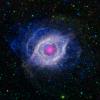
|
-
PIA15817:
-
The Helix Nebula: Unraveling at the Seams
Full Resolution:
TIFF
(108.7 MB)
JPEG
(3.087 MB)
|

|
2012-05-16 |
Helix Nebula
|
Galaxy Evolution Explorer (GALEX)
|
Ultraviolet/Visible Camera
|
2920x2920x3 |

|
-
PIA15658:
-
NGC 7293, the Helix Nebula
Full Resolution:
TIFF
(25.58 MB)
JPEG
(884.6 kB)
|

|
2012-05-16 |
CW Leo
|
Galaxy Evolution Explorer (GALEX)
|
Ultraviolet/Visible Camera
|
8000x5000x3 |
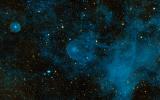
|
-
PIA15417:
-
CW Leo
Full Resolution:
TIFF
(120 MB)
JPEG
(8.366 MB)
|

|
2012-05-16 |
M31
|
Galaxy Evolution Explorer (GALEX)
|
Ultraviolet/Visible Camera
|
9400x7000x3 |
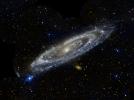
|
-
PIA15416:
-
Andromeda
Full Resolution:
TIFF
(197.4 MB)
JPEG
(6.751 MB)
|

|
2012-04-03 |
|
Galaxy Evolution Explorer (GALEX)
Spitzer Space Telescope
|
IRAC
Ultraviolet/Visible Camera
|
1130x1130x3 |
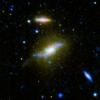
|
-
PIA15419:
-
The Beginning of the End of Star Formation
Full Resolution:
TIFF
(3.835 MB)
JPEG
(129 kB)
|

|
2012-03-22 |
|
Galaxy Evolution Explorer (GALEX)
|
Ultraviolet/Visible Camera
|
6000x6000x3 |
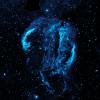
|
-
PIA15415:
-
Cygnus Loop Nebula
Full Resolution:
TIFF
(108 MB)
JPEG
(5.259 MB)
|

|
2011-05-25 |
|
Galaxy Evolution Explorer (GALEX)
Spitzer Space Telescope
|
IRAC
Ultraviolet/Visible Camera
|
2853x1903x3 |
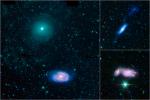
|
-
PIA14097:
-
Galactic Train Wrecks
Full Resolution:
TIFF
(16.29 MB)
JPEG
(537.9 kB)
|

|
2011-04-21 |
|
Galaxy Evolution Explorer (GALEX)
|
Ultraviolet/Visible Camera
|
2004x1004x3 |

|
-
PIA14090:
-
Little Galaxies Pack a Big Punch
Full Resolution:
TIFF
(6.044 MB)
JPEG
(106.2 kB)
|

|
2010-08-11 |
|
Galaxy Evolution Explorer (GALEX)
Hubble Space Telescope
|
Ultraviolet/Visible Camera
|
2400x1600x3 |
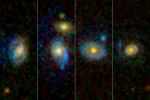
|
-
PIA13318:
-
Ultraviolet Ring Around the Galaxies
Full Resolution:
TIFF
(11.53 MB)
JPEG
(192.2 kB)
|

|
2010-06-17 |
|
Galaxy Evolution Explorer (GALEX)
|
Ultraviolet/Visible Camera
|
3790x1890x3 |
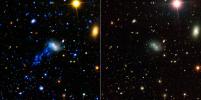
|
-
PIA13192:
-
Now You See a Tail, Now You Don't
Full Resolution:
TIFF
(21.49 MB)
JPEG
(666.4 kB)
|

|
2009-04-28 |
M33
|
Galaxy Evolution Explorer (GALEX)
Spitzer Space Telescope
|
Ultraviolet/Visible Camera
|
4402x4402x3 |
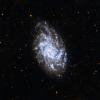
|
-
PIA12000:
-
NASA's Galaxy Mission Celebrates Sixth Anniversary
Full Resolution:
TIFF
(58.13 MB)
JPEG
(1.866 MB)
|

|
2009-04-28 |
M33
|
Galaxy Evolution Explorer (GALEX)
Spitzer Space Telescope
|
Ultraviolet/Visible Camera
|
2228x3462x3 |

|
-
PIA11999:
-
NASA's Galaxy Mission Celebrates Sixth Anniversary
Full Resolution:
TIFF
(23.17 MB)
JPEG
(1.039 MB)
|

|
2009-04-28 |
M33
|
Galaxy Evolution Explorer (GALEX)
Spitzer Space Telescope
|
Ultraviolet/Visible Camera
|
2228x3462x3 |

|
-
PIA11998:
-
NASA's Galaxy Mission Celebrates Sixth Anniversary
Full Resolution:
TIFF
(23.17 MB)
JPEG
(811.1 kB)
|

|
2009-04-03 |
NGC 3242
|
Galaxy Evolution Explorer (GALEX)
|
Ultraviolet/Visible Camera
|
2240x2240x3 |
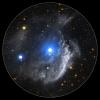
|
-
PIA11968:
-
The Extended Region Around the Planetary Nebula NGC 3242
Full Resolution:
TIFF
(15.07 MB)
JPEG
(446.2 kB)
|

|
2008-10-31 |
|
Galaxy Evolution Explorer (GALEX)
|
Ultraviolet/Visible Camera
|
5400x2700x3 |
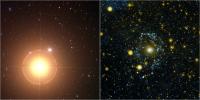
|
-
PIA11393:
-
'Ghost of Mirach' Rears its Spooky Head
Full Resolution:
TIFF
(43.74 MB)
JPEG
(1.332 MB)
|

|
2007-12-13 |
M51
|
Galaxy Evolution Explorer (GALEX)
Spitzer Space Telescope
|
IRAC
Ultraviolet/Visible Camera
|
1978x2850x3 |

|
-
PIA10200:
-
A Classic Beauty
Full Resolution:
TIFF
(16.93 MB)
JPEG
(526.5 kB)
|

|
2007-11-14 |
|
Galaxy Evolution Explorer (GALEX)
|
Ultraviolet/Visible Camera
|
1200x1200x3 |

|
-
PIA10116:
-
NGC 1316
Full Resolution:
TIFF
(4.325 MB)
JPEG
(72.89 kB)
|

|
2007-11-14 |
|
Galaxy Evolution Explorer (GALEX)
|
Ultraviolet/Visible Camera
|
1122x1122x3 |
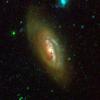
|
-
PIA10115:
-
NGC 4569
Full Resolution:
TIFF
(3.781 MB)
JPEG
(167.7 kB)
|

|
2007-11-14 |
|
Galaxy Evolution Explorer (GALEX)
|
Ultraviolet/Visible Camera
|
1012x1012x3 |
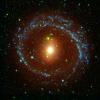
|
-
PIA10114:
-
NGC 1291
Full Resolution:
TIFF
(3.077 MB)
JPEG
(145.5 kB)
|

|
2007-11-14 |
|
Galaxy Evolution Explorer (GALEX)
|
Ultraviolet/Visible Camera
|
1333x1063x3 |
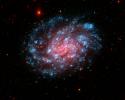
|
-
PIA10113:
-
NGC 300
Full Resolution:
TIFF
(4.255 MB)
JPEG
(131.1 kB)
|

|
2007-08-15 |
Mira
|
Galaxy Evolution Explorer (GALEX)
|
Ultraviolet/Visible Camera
|
1569x1600x3 |

|
-
PIA09961:
-
Mira's Tail There All Along
Full Resolution:
TIFF
(7.544 MB)
JPEG
(471.7 kB)
|

|
2007-08-15 |
Mira
|
Galaxy Evolution Explorer (GALEX)
|
Ultraviolet/Visible Camera
|
717x478x3 |
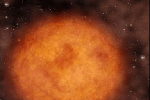
|
-
PIA09960:
-
A Real Shooting Star (Artist Concept)

Full Resolution:
TIFF
(1.03 MB)
JPEG
(26.41 kB)
|

|
2007-08-15 |
Mira
|
Galaxy Evolution Explorer (GALEX)
|
Ultraviolet/Visible Camera
|
1569x800x3 |

|
-
PIA09959:
-
Anatomy of a Shooting Star
Full Resolution:
TIFF
(3.772 MB)
JPEG
(275.3 kB)
|

|
2007-08-15 |
Mira
|
Galaxy Evolution Explorer (GALEX)
|
Ultraviolet/Visible Camera
|
6000x1500x3 |

|
-
PIA09958:
Mira Soars Through the Sky
Full Resolution:
TIFF
(27 MB)
JPEG
(1.115 MB)
|

|
2006-11-07 |
|
Spitzer Space Telescope
|
IRAC
Ultraviolet/Visible Camera
|
6000x6000x3 |
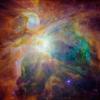
|
-
PIA01322:
-
Chaos at the Heart of Orion
Full Resolution:
TIFF
(108 MB)
JPEG
(1.536 MB)
|

|
2006-09-28 |
|
Galaxy Evolution Explorer (GALEX)
Spitzer Space Telescope
|
MIPS
Ultraviolet/Visible Camera
|
7430x2410x3 |

|
-
PIA08787:
-
Amazing Andromeda Galaxy
Full Resolution:
TIFF
(53.72 MB)
JPEG
(3.426 MB)
|

|
2005-07-25 |
NGC 4625
|
Galaxy Evolution Explorer (GALEX)
|
Ultraviolet/Visible Camera
|
872x872x3 |
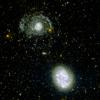
|
-
PIA03541:
-
Look at my Arms!
Full Resolution:
TIFF
(2.284 MB)
JPEG
(107.3 kB)
|

|
2005-07-25 |
NGC 4625
|
Galaxy Evolution Explorer (GALEX)
|
Ultraviolet/Visible Camera
|
872x872x3 |
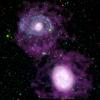
|
-
PIA03540:
-
Galactic Halos of Hydrogen
Full Resolution:
TIFF
(2.284 MB)
JPEG
(92.95 kB)
|

|
2005-07-25 |
NGC 4625
|
Galaxy Evolution Explorer (GALEX)
|
Ultraviolet/Visible Camera
|
872x872x3 |
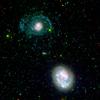
|
-
PIA03536:
-
Hello to Arms
Full Resolution:
TIFF
(2.284 MB)
JPEG
(93.92 kB)
|

|
2005-04-11 |
NGC 300
|
Galaxy Evolution Explorer (GALEX)
|
Ultraviolet/Visible Camera
|
1273x967x3 |
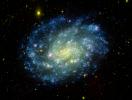
|
-
PIA07828:
-
Classic Galaxy with Glamour
Full Resolution:
TIFF
(2.546 MB)
JPEG
(148.3 kB)
|

|
1999-06-12 |
Earth
|
DSPSE
|
Ultraviolet/Visible Camera
|
969x1385x3 |

|
-
PIA00432:
-
Clementine Images of Earth and Moon
Full Resolution:
TIFF
(1.272 MB)
JPEG
(132.8 kB)
|

|
1998-06-04 |
Moon
|
DSPSE
|
Ultraviolet/Visible Camera
|
1719x1719x1 |
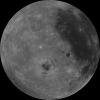
|
-
PIA00305:
-
West Limb View of Earth's Moon as Seen by the Clementine Spacecraft
Full Resolution:
TIFF
(2.016 MB)
JPEG
(291.8 kB)
|

|
1998-06-04 |
Moon
|
DSPSE
|
Ultraviolet/Visible Camera
|
1719x1719x1 |
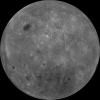
|
-
PIA00304:
-
Farside View of Earth's Moon as Seen by the Clementine Spacecraft
Full Resolution:
TIFF
(1.976 MB)
JPEG
(318.8 kB)
|

|
1998-06-04 |
Moon
|
DSPSE
|
Ultraviolet/Visible Camera
|
1719x1719x1 |
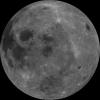
|
-
PIA00303:
-
East Limb View of Earth's Moon as Seen by the Clementine Spacecraft
Full Resolution:
TIFF
(2.029 MB)
JPEG
(303.8 kB)
|

|
1998-06-04 |
Moon
|
DSPSE
|
Ultraviolet/Visible Camera
|
1719x1719x1 |
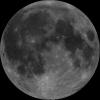
|
-
PIA00302:
-
Nearside of Earth's Moon as Seen by the Clementine Spacecraft
Full Resolution:
TIFF
(1.905 MB)
JPEG
(265.4 kB)
|

|
1998-06-03 |
Moon
|
DSPSE
|
Ultraviolet/Visible Camera
|
4316x4299x3 |
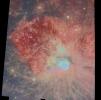
|
-
PIA00090:
-
Multispectral Mosaic of the Aristarchus Crater and Plateau
Full Resolution:
TIFF
(45.47 MB)
JPEG
(1.293 MB)
|

|
1996-06-03 |
Moon
|
DSPSE
|
Ultraviolet/Visible Camera
|
7738x7730x1 |
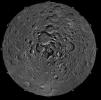
|
-
PIA00002:
-
North Pole Region of the Moon as Seen by Clementine
Full Resolution:
TIFF
(37.43 MB)
JPEG
(5.483 MB)
|

|
1996-06-03 |
Moon
|
DSPSE
|
Ultraviolet/Visible Camera
|
7943x7943x1 |
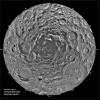
|
-
PIA00001:
-
South Pole Region of the Moon as Seen by Clementine
Full Resolution:
TIFF
(32.98 MB)
JPEG
(6.572 MB)
PNG
(26.32 MB)
|

 Planetary Data System
Planetary Data System


















































